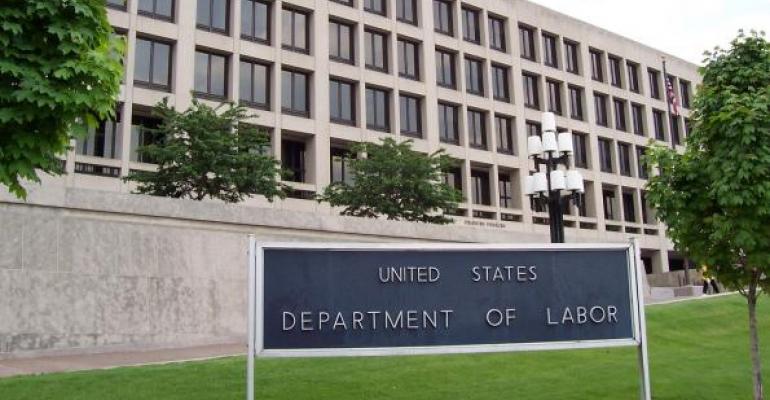The Department of Labor’s fiduciary rule could create a wave of so-called “orphan accounts” at independent broker/dealers, IBD executives said during the Financial Services Institute's OneVoice conference Tuesday.
Most brokerage firms have a varying number of orphan, or unassigned, accounts on the books today. These are usually smaller customer accounts that are transferred to the home office in the event of an advisor departing the firm and leaving the client behind, an advisor passing away suddenly or an advisor purposefully segmenting their book.
“I think there’s some big issues around DOL in general," said Paul Sankovich, chief compliance officer at Wells Fargo Advisors Financial Network, during a panel at OneVoice "As it gets down into the small accounts, I think simply the greatest challenge we have is how do we come up with a business model or service model that maintains service levels for comprehensive financial solutions for smaller clients—probably the clients that need the advice the most—in a way that we can still have margins and make it a sustainable business model."
When accounts are orphaned at FiNet, the firm first attempts to redistribute them to a local branch, Sankovich said. If someone cannot be found locally, the accounts are then serviced by call center employees through a unit called the Solution Center.
“We have something we originally called the small account utility. I do not recommend calling it a small account utility—call it something much nicer than that," Sankovich joked. FiNet’s solution center offers clients with accounts under $50,000 a limited product menu, but not the full suite of advice that is available to advisor clients within FiNet. Sankovich estimated that of the 600,000 accounts within FiNet, less than 50,000 accounts are serviced through the Solution Center.
But the current systems in place are not scalable if advisors have to offload numerous accounts they can no longer serve because the assets don't justify a fee-based relationship. Advisors will be doing a cost-benefit analysis of their book and many will likely determine it’s not “worth it” to work with these small accounts, says Joe Terry, chief supervision officer at AIG Advisor Group.
Technology, of course, could help solve some of these issues. Kevin Manz, vice president of operations at Cambridge Investment Research, recommends firms start working with vendors out there now to try and develop products or scenarios that firms can use to leverage scalable services in this space. Cambridge has also started to explore offering a digital advice platform that will make the tools currently used by advisors available to clients.
“We may have to create a model, not to compete with the advisor, but to give the advisor the option to send their clients to a model that still maintains that relationship even though the account may not support an advisory fee structure,” Manz said.
But simply offering a robo advisor option will not completely solve the problem. “To form a partnership with a robo and say ‘we’re going to send you small accounts'—that doesn’t necessarily work under DOL, nor does it necessarily work for the client or is the best solution for the client,” Terry says.
Instead, pairing a robo with a human element—the so-called bionic model—is probably a better solution, he added. Which means many firms will still need a call center, Terry said. “In our view, there's still going to need to be that component of human interaction. As to what size or scale that call center ends up being depends on the firm.”
The bionic solution, particularly around a call center component, could offer the industry an opportunity when it comes to new advisors entering the industry, Sankovich said. “This is a real opportunity for the next generation of advisors. These smaller account books is a good way to get them on-ramped into that particular segment, or at least get them trained and up and running.”
Yet if the finalized rule has only an eight-month implementation period, as outlined in the proposal, all firms are going to be under a lot of pressure to turn around something quickly, Manz said. And these solutions take time to build and implement.
“You have to find a scalable solution in an era of price compression and increasing regulatory standards that still provides a reasonable service to clients. That’s hard to do,” Sankovich said. “The price compression is the one that really limits your options.”
The other big issue is that these solutions only really apply to accounts held with the firm. Sankovich, Terry and Manz all said there were currently no real answers for accounts held away from the firm, those not directly supervised by the firm.
The one concrete thing firms can do today is evaluate how many orphan accounts are currently on the books and get a sense of where the firm stands, Terry says.
“The first step is understanding what your unassigned, orphan account book looks like today. What portion of your business does that represent, from the number of accounts, from an AUM standpoint, what services are you providing today and who is providing it?” Terry says.

